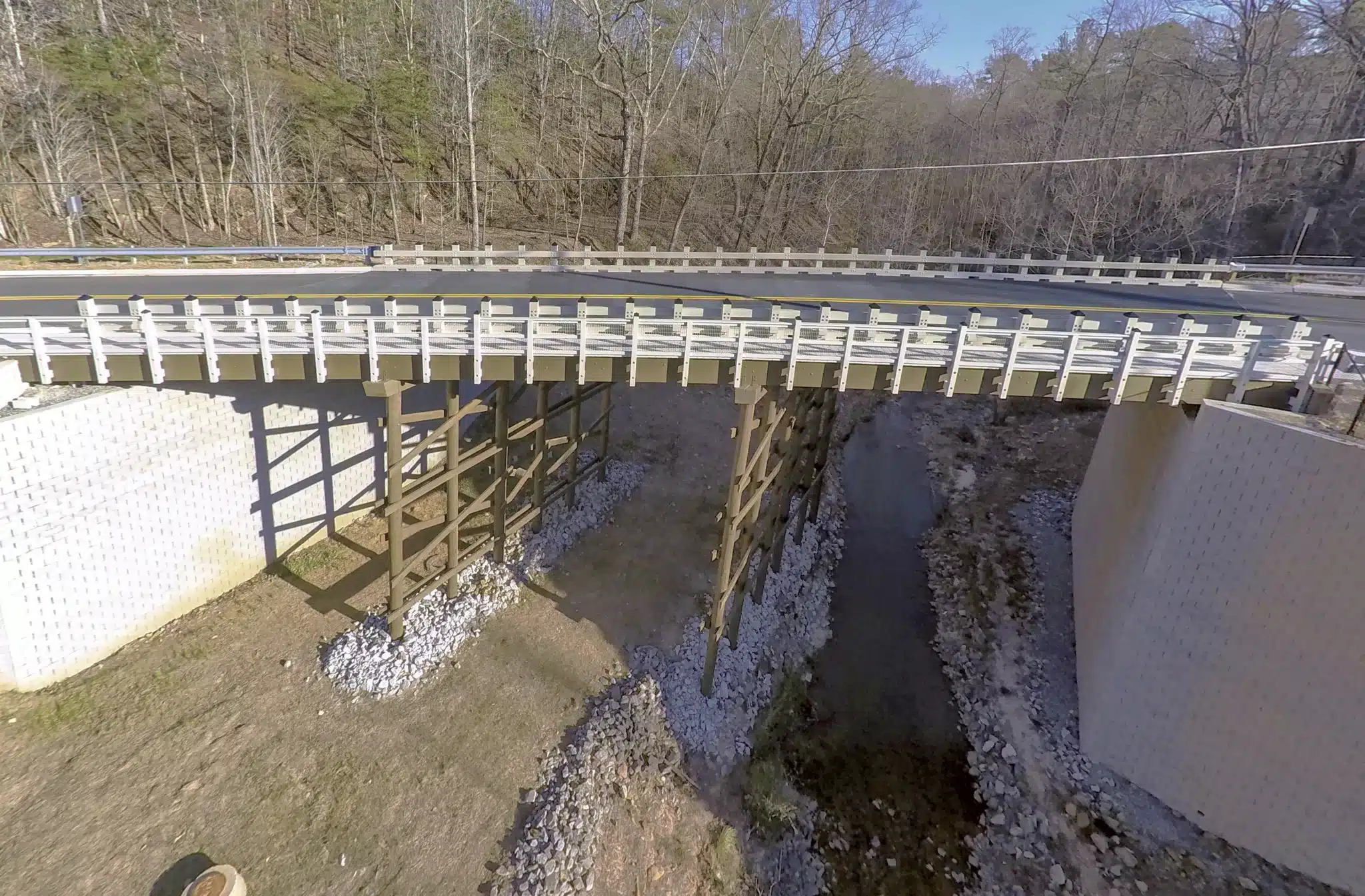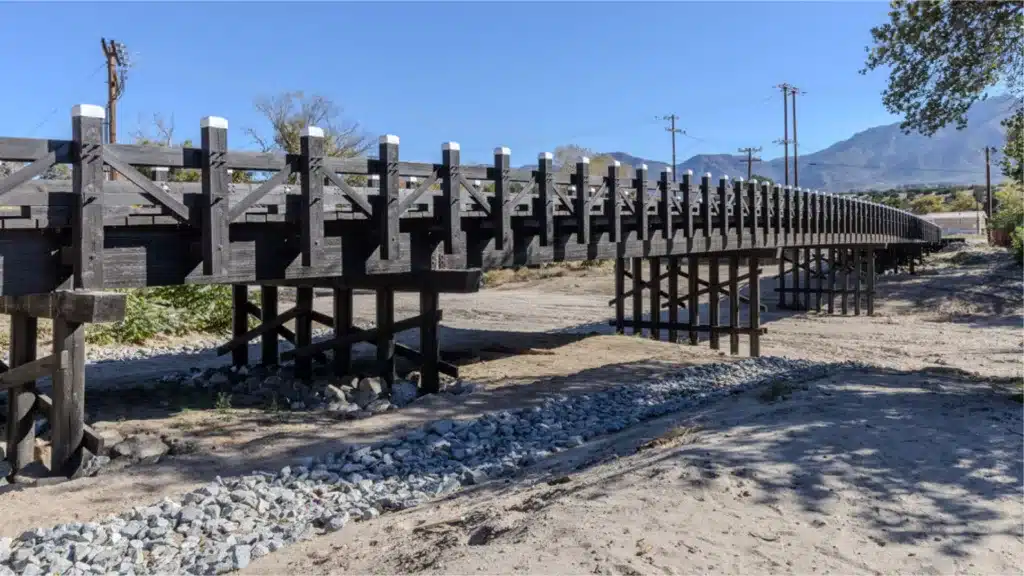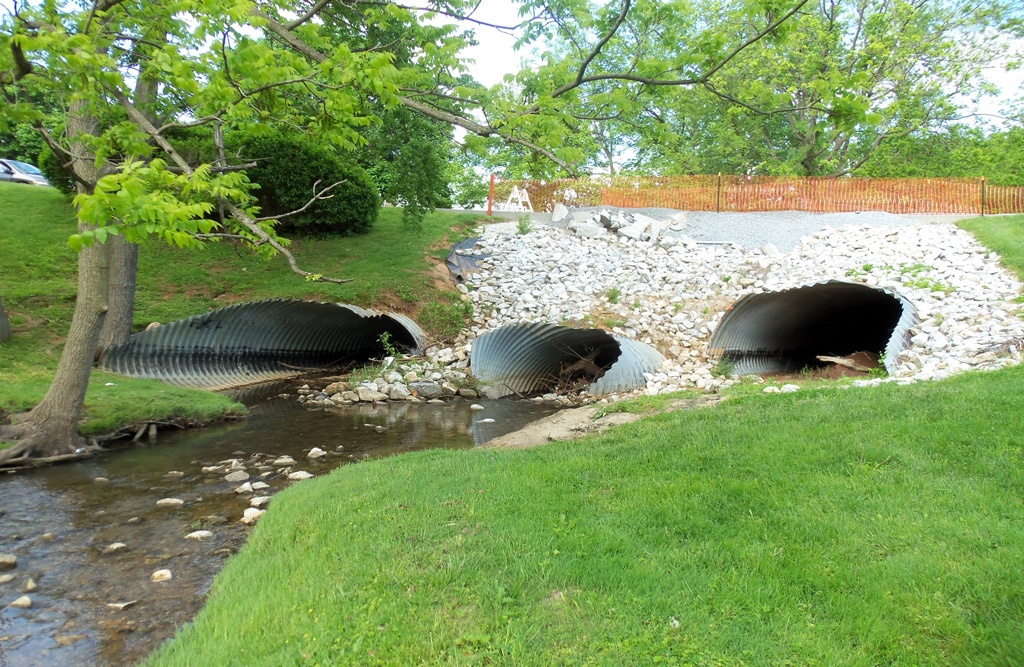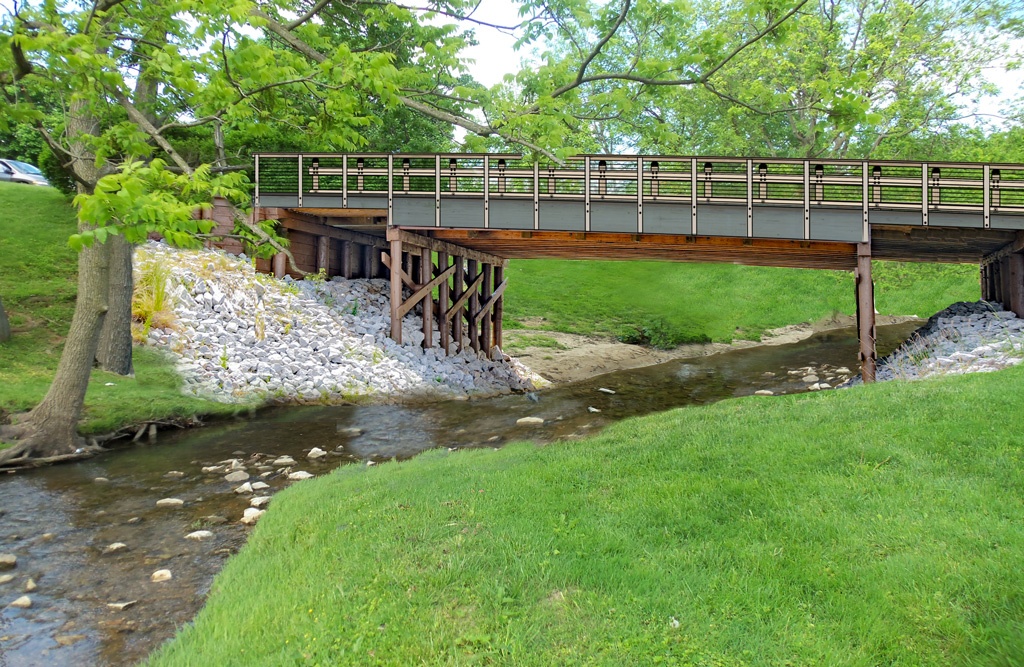Why You Should Choose A Bridge Instead Of A Culvert
Five points to consider before choosing a crossing method
Stop Defaulting to Culvert Solutions, Consider a Bridge as an Alternative
Culverts can seem like a quick and easy fix to crossing water, wetlands, or floodways on a project. However, sometimes the better option may be a bridge. Bridges can be more beneficial economically, ecologically, and aesthetically for a project. Consider how a bridge may satisfy your project needs using these five points before defaulting to a culvert solution.
Five Points To Consider
- Permitting
- Environmental Impacts & Mitigation
- Costs
- Design, Maintenance & Risks
- Aesthetics
Related case studies

Inspired Living
This bridge passes the 100-year flood flow test, & reduces the environmental impact where the culvert would have failed.

Thousand Trails
Torrential flash flooding washed away a culvert system to a large RV Park in Acton, CA. A large portion of the park was rendered inaccessible.
permitting
Bridges can take less time to permit
bridge solutions alleviate concerns regarding another culvert collapse
Culverts can be much more difficult to permit than bridges. This could mean an increased risk of delaying your schedule and project completion. Additionally, you could accrue time and expense for planning, permitting, or third-party verifications for alternative solutions.
This is how it works: The Army Corps of Engineers (Army Corps) requires that you receive their approval before developing in areas with wetlands or other bodies of water of public interest.1 For the Army Corps to approve a project, they review the environmental impacts that could be caused by your project. If the Army Corps thinks that the amount of environmental damage to be caused is too great, they will require you to revise the project proposal to mitigate the impacts.
Revising a project proposal could mean having to use a different type of culvert, engaging in environmental mitigation efforts, or utilizing something completely different, like a bridge. Typically, a bridge solution can significantly reduce, or in some cases eliminate the impacts that can be a cause for permit denial. Some projects are not subject to Army Corps approvals, but they will require an environmental assessment and approval by a similar local or regional authority. In either jurisdiction, these revisions can prolong a project and in turn cost more money.
environmental impacts & mitigation
culverts negatively impact sensitive environments
bridges increase flow clearance within flood area
Culverts affect the flow of water by creating a bottleneck. This bottleneck changes how the water flows on either side of it and can affect aquatic life, as well as change the pattern of the river.2 These environmental impacts can often contribute to increased mitigation costs.3 Alternatively, bridges can allow for the natural flow of water, limiting their impact as compared to a culvert.
This is why the Center for Environmental Excellence by AASHTO notes that “it is generally believed that culverts are more detrimental to streams than bridges”, in its Designing for Environmental Stewardship in Construction & Maintenance Chapter.2
costs
hidden costs associated with culverts
bridges are less expensive than a replacement culvert
Obtaining a permit for culvert installation can result in high mitigation costs. The price of mitigation can push the costs of a culvert over the price of a bridge. Mitigation is the act of ‘replacing’ one environmental impact with an equivalent investment of another to offset the environmental impact of your project.7,8 There are two main types of mitigation. One type is to pay impact fees that are typically associated with the square footage or acreage of the affected area.
Another type is to reserve a comparable area on-site designated for mitigation alternatives like constructed or revitalized wetlands.7 In some cases, the cost of mitigation can end up being even more expensive than the culvert itself. This might be a good time to compare what the cost of a bridge might be. Permitting authorities can be hesitant to approve a culvert because of its environmental impact, which includes waterway constraints and possible flood risk. These culvert impacts can include: clearing out the immediate natural surroundings, changing the flow of water, and filling in the surrounding landscape with dirt to buffer the culvert while supporting the above roadway.

Collapsed Culvert System

Sustainable Timber Bridge
design, maintenance, & risks
The resiliency of a YBC bridge
bridges are easier to inspect, less to maintain, and increased flow, decreasing risk
There are three interrelated things to consider when evaluating the functional longevity of a bridge or culvert solution: design, maintenance, and risk.
What is it about design that affects resiliency in a bridge versus a culvert? A culvert is often a cookie-cutter element that can significantly alter the natural processes. In addition, a culvert is sometimes designed to accommodate flow but not necessarily clear the 100-year flood elevation; meaning that in some cases the 100-year flood elevation can exceed the designed roadway elevation and during extreme flooding, excess water is then expected to cross the roadway.10 Alternatively, bridges are typically designed with a bridge’s low chord above the 100-year Elevation. A YBC bridge design is always recommended to be a minimum of 12 inches above the 100-year Flood Elevation. This element of bridge design helps to increase flood flow area, clearance for debris, and reduces the overall risk of adverse impacts during flood events.
What is typical for responsible maintenance of a bridge versus a culvert? It’s important to note that all roadways require a general level of maintenance, including keeping the path of travel clear, maintaining the surrounding areas, and performing routine inspections. For a YBC timber bridge, the low-maintenance recommendations include every 2 to 4 years general tightening of fasteners and updating the coatings. In contrast, culverts may require frequent cleaning out of debris to prevent clogging. Additionally, all crossings typically require an inspection about every two years. The frequency of inspection depends on the legal requirements per state.
Now that the design and maintenance roles have been evaluated for bridges versus culverts; how do they influence risks? As far as risks are concerned, there are two levels of risk: risk of improper maintenance and risk of design failure. An improperly maintained bridge or culvert of any type runs the risk of a reduced life span and capacity that’s attributed to negligence.
However, in the case of a YBC bridge, if low-maintenance design elements and regular inspection recommendations are followed, then it is unlikely to pose risks of hidden threats. Alternatively, an improperly maintained or clogged culvert can collapse and cause flooding, roadway failures, or other harmful environmental impacts.6 In the event of flooding, which is one of the greatest risks of nature that a bridge or culvert design will be subjected to, the weather intensities are greater than average conditions. When exposed to flooding, a bridge design has a reduced risk of failure because it can traditionally withstand flooding better than a culvert due to design requirements and increased clearances.7 In contrast, a culvert design inundated with increased flow and accompanying debris can be adversely impacted and potentially fail under the heightened storm conditions.10
aesthetics
Create an icon
bridges open sight lines to wetlands and compliment the surroundings
A York Bridge enhances the style of your project which is a key element that most culverts can lack. At YBC, we synergize with you to customize your crossing. Culverts are common solutions and many times treated as a mundane or overlooked functional feature. In turn, a DeceroTM designed York Bridge is something that is guaranteed to catch people’s eye, while remaining equally if not more functional than the culvert. By incorporating a YBC bridge, you give your project something unique for people to talk about and enjoy while possibly reducing your costs.
A York Bridge enhances the style of your project which is a key element that most culverts can lack. At YBC, we synergize with you to customize your crossing. Culverts are common solutions and many times treated as a mundane or overlooked functional feature. In turn, a DeceroTM designed York Bridge is something that is guaranteed to catch people’s eye, while remaining equally if not more functional than the culvert. By incorporating a YBC timber bridge, you give your project something unique for people to talk about and enjoy while possibly reducing your costs.
still not sure which one to go with?
arch culverts
How Arch Culverts Compare to timber bridges
If you are going to be spending more money on an arch culvert, it may be worth it to consider a timber bridge due to potential cost savings and the aesthetic elements it can bring.
Bridges and arch culverts are more similar in design as compared to bridges and classic culverts. This is because both have an open bottom that allows for the natural path of the body of water to continue.4 Permitting for both options will be easier because the environmental impact will be less. Additionally, both bridges and arch culverts are less maintenance than classic culverts because they eliminate the scenario of debris build-up.2
Generally speaking, the bridge and arch culvert are comparable crossing solutions both involving advanced design, and construction.5 However, the bridge has a greater potential for spanning – up to 120 linear feet for pedestrian bridges and 100 linear feet for vehicular bridges. Common arch culverts average spans top out around 48 feet.9
Create an icon
Sources
- https://www.sas.usace.army.mil/Portals/61/docs/Regulatory/DIGITAL%20EAPPLICATION/PermittingProcessInformation.pdf
- https://environment.transportation.org/environmental_issues/construct_maint_prac/compendium/manual/3_5.aspx
- http://www.aeclab.org/modules/info/effects_of_bridges_and_culverts.html
- http://www.5counties.org/docs/roadedu/rmchapter4.pdf
- https://www.oregon.gov/odot/hydraulics/Docs_Hydraulics_Manual/Hydraulics-09.pdf
- https://www.youtube.com/watch?v=NTbhyHNA1Vc
- https://www.epa.gov/wetlands/wetlands-restoration-definitions-and-distinctions
- https://definitions.uslegal.com/e/environmental-mitigation-activities/
- https://fdotwww.blob.core.windows.net/sitefinity/docs/default-source/content2/roadway/ppmmanual/2013/volume1/chap33.pdf?sfvrsn=2dddbcb8_0
- http://www.pacificwatershed.com/sites/default/files/12_-_appendix_a_-_culvert_sizing_procedures.pdf
